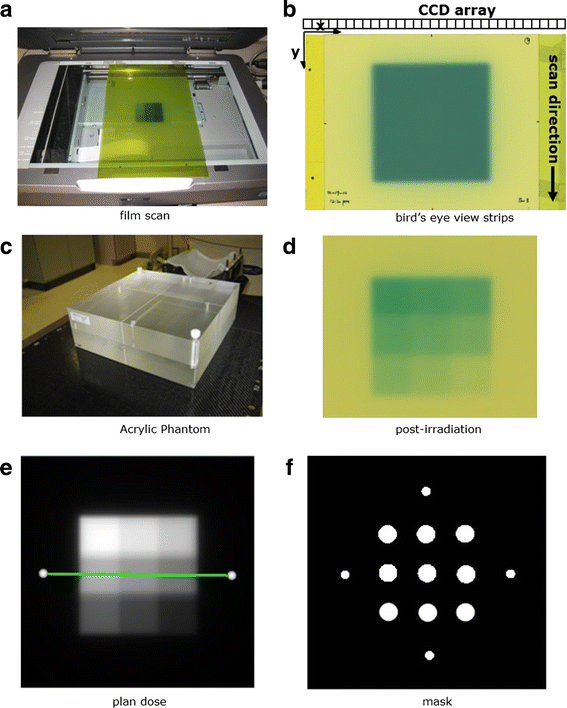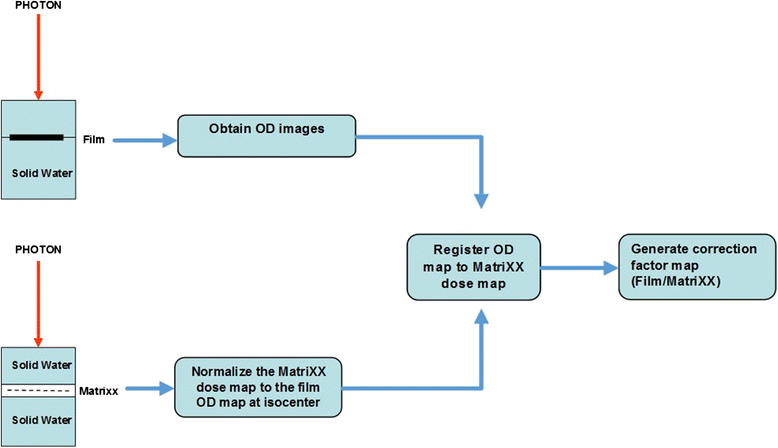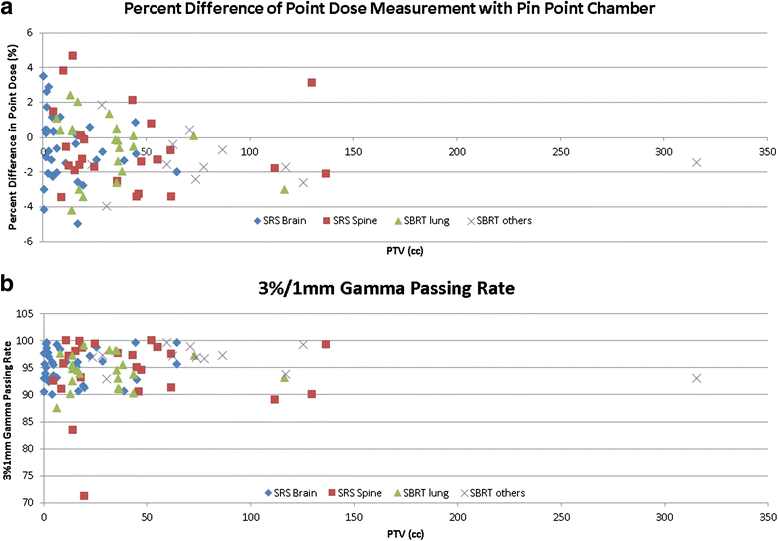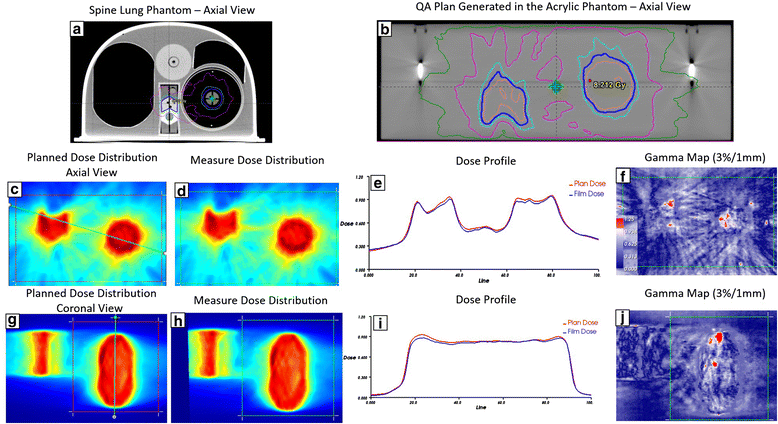Precise film dosimetry for stereotactic radiosurgery and stereotactic body radiotherapy quality assurance using Gafchromic™ EBT3 films
- PMID: 27716323
- PMCID: PMC5050597
- DOI: 10.1186/s13014-016-0709-4
Precise film dosimetry for stereotactic radiosurgery and stereotactic body radiotherapy quality assurance using Gafchromic™ EBT3 films
Abstract
Purpose: The purpose of this study is to evaluate the dosimetric uncertainty associated with Gafchromic™ (EBT3) films and establish a practical and efficient film dosimetry protocol for Stereotactic Radiosurgery (SRS) and Stereotactic Body Radiotherapy (SBRT).
Method and materials: EBT3 films were irradiated at each of seven different dose levels between 1 and 15 Gy with open fields and standard deviations of dose maps were calculated at each color channel for evaluation. A scanner non-uniform response correction map was built by registering and comparing film doses to the reference ion chamber array-based dose map delivered with the same doses. To determine the temporal dependence of EBT3 films, the average correction factors of different dose levels as a function of time were evaluated up to 4 days after irradiation. An integrated film dosimetry protocol was developed for dose calibration, calibration curve fitting, dose mapping, and profile/gamma analysis. Patient specific quality assurance (PSQA) was performed for 83 SRS/SBRT treatment plans, and analysis of the measurements and calculations are presented here.
Results: The scanner response varied within 1 % for the field sizes less than 5 × 5 cm2, and up to 5 % for the field sizes of 10 × 10 cm2 for all color channels. The scanner correction method was able to remove visually evident, irregular detector responses for larger field sizes. The dose response of the film changed rapidly (~10 %) in the first two hours and became smooth plateaued afterwards, ~3 % change between 2 and 24 h. The uncertainties were approximately 1.5, 1.7 and 4.8 % over the dose range of 3~15 Gy for the red, green and blue channels. The green channel showed very high sensitivity and low uncertainty in the dose range between 10 and 15 Gy, which is suitable for SRS/SBRT commissioning and PSQA. The difference between the calculated dose and measured dose of ion chamber measurement at isocenter was -0.64 ± 2.02 for all plans, corresponding to a 95 % confidence interval of (-1.09, -0.26). The percentage of points passing the 3 %/1 mm gamma criteria in absolute dose, averaged over all tests was 95.0 ± 4.2.
Conclusion: We have developed the EBT3 films based dosimetry protocol to obtain absolute dose values. The overall uncertainty has been established to be 1.5 % for SRS and SBRT PSQA.
Keywords: Gafchromic films; Quality assurance; Stereotactic body radiation therapy; Stereotactic radiosurgery.
Figures









References
MeSH terms
LinkOut - more resources
Full Text Sources
Other Literature Sources

